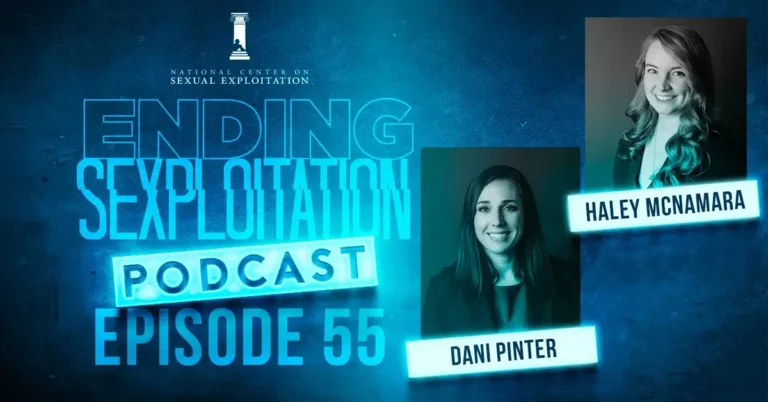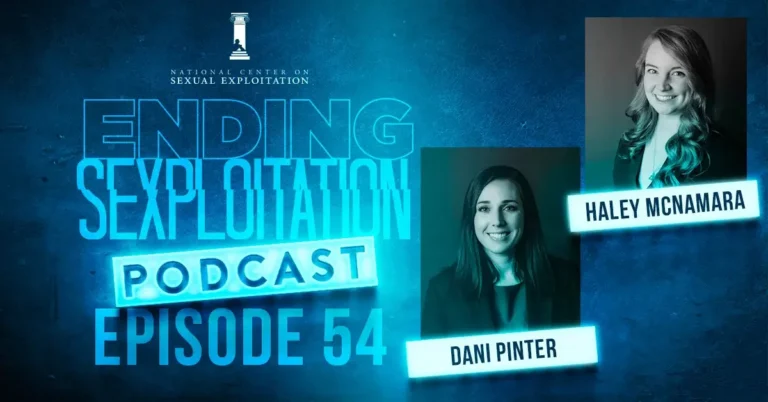Dalma* forced a watery smile as she bid her last patient of the day goodbye.
She closed the door, then slumped against it, letting her head fall backward until it thumped on the hard wood. Shutting her eyes, she blew out a slow, steadying breath.
When Dalma had decided to become a therapist for child sexual abuse survivors, she’d known it wouldn’t be a pleasure cruise. And it was worth it. It was rewarding, journeying with people through their long process of healing.
But sometimes … Sometimes, Dalma just wished she had a time machine, rather than a PhD in psychology. Because more than anything, Dalma wished her patients didn’t have to heal.
She wished they’d simply never been hurt.
Time machines, alas, do not exist.
But although we cannot employ time machines to undo the harm suffered by child sexual abuse survivors, we can prevent others from experiencing the same harm.
Benjamin Franklin once said, “An ounce of prevention is worth a pound of cure.” And with your help, we are moving far beyond a mere ounce of prevention.
In our efforts to end sexual abuse and exploitation, NCOSE seeks out the highest impact tactics that will prevent harm for the greatest amount of people. This is what we call “mass-scale prevention.”
Together, we are preventing the sexual abuse of innumerable children—not just striving to put on band-aids and patch up wounds after they’ve already been abused (though survivor services are of course extremely important as well).
Two tactics which have an especially large impact in preventing child sexual abuse are:
- Preventing predator’s online access to children
- Preventing childhood pornography exposure, an established risk factor for child sexual abuse perpetration and victimization.
Preventing Predator’s Online Access to Children
Social media apps, gaming platforms, and other interactive technologies are major avenues by which predators gain access to children for purposes of sexual abuse and exploitation. For example, a 2020 quantitative research study found that 1 out of 4 kids aged 9–17 reported having a sexual interaction on social media with someone they believed to be an adult. Further, an analysis of U.S. sex trafficking cases active in 2020 found that the most common means by which sex traffickers accessed victims was the Internet.
Online grooming can occur on virtually any major interactive platform, including online gaming and social media. One study found that children could become victims of online grooming in as little as 17 minutes (Lorenzo-Dus, Kinzel, Di Cristofaro, 2020).
— National Center on Sexual Exploitation (@NCOSE) September 18, 2023
This is why one of our core strategies is pressing on tech companies to better protect children by making it more difficult for predators to contact and groom them.
For example, let’s look at the cases of TikTok and Instagram, two of the most popular social media platforms with teens. When you joined us in putting public pressure on these companies, both agreed to stop allowing adults to send unsolicited direct messages to children they don’t already know. This eliminated the main way predators where reaching and grooming children on these platforms.
The scope of impact of these changes is absolutely enormous. Globally, almost 360 million teens use TikTok on a monthly basis (32.5% of 1.1 billion monthly users) and almost 190 million minors use Instagram (8% of 2.35 billion monthly users). That’s hundreds of millions of children who are now better protected on these platforms, thanks to your action!
This is only one example of countless major victories we’ve achieved together. Take action below to continue pressing on tech companies to prioritize child safety! (Keep reading below action form):
Preventing Childhood Pornography Exposure, an Established Risk Factor for Child Sexual Abuse Perpetration and Victimization
An often-overlooked element in efforts to prevent child sexual abuse is pornography. Research has established that childhood pornography exposure is a major risk factor for both perpetration and victimization, making it vital to address.
Pornography Exposure Increases a Child’s Odds of Sexually Aggressing Against Other Children
When we talk about child sexual abuse, it’s important to understand that children are not only victimized by adults; they are also victimized by other children. In fact, research shows that male adolescents aged 10-17 are responsible for 35% to 65% of child sexual abuse contacts. And pornography plays a huge role in fueling this.
A longitudinal study following 10-15 year-olds over a period of three years found that exposure to violent pornography predicted a nearly six-fold increase in self-reported sexually aggressive behavior later on. To be very clear: violent content is not a small subset of the pornography kids are seeing. A 2022 study found that 52% of teens exposed to pornography reported seeing violent forms of pornography such as choking (36%), someone in pain (37%), or depictions of what appears to be rape (19%).
Considering that children often learn by observing and imitating the behavior of others, is it any wonder that pornography is teaching them to sexually aggress against other children?
In fact, some children even outright acknowledge that pornography was their teacher. Nancy Green, the Director of child advocacy group Palmer Place, states:
“We have had [cases of where] the child has already said, you know, ‘I learned that from the Internet.’ And we’ve had children that basically are describing an addiction to pornography. And then they’re trying it out.”
Sexual Assault Nurse Examiner Heidi Olson attests to seeing the link between pornography and child-on-child harmful sexual behavior “on almost a daily basis.” Among the many stories she shares, she speaks of a 13-year-old boy who sexually molested his 2-year-old sister; they found pornography all over the boy’s phone. Olson also describes cases where the children appear to be imitating classic scenes from mainstream pornography.
Pornography Consumption Can Escalate to Consumption of Child Sexual Abuse Material
Research also shows that early age of exposure to pornography is a significant risk factor consuming child sexual abuse material (CSAM, the more apt term for “child pornography”) later on in life.
For children and adults alike, consumption of pornography often escalates towards more extreme content, as many users grow desensitized and need to seek out novel, stronger stimuli in order to achieve the same level of sexual arousal. One study examining the self-identified motivations of CSAM offenders found that some participants reported escalating towards CSAM after prolonged exposure and desensitization to legal pornography.
Further, consumption of child sexual abuse material and contact abuse of children are heavily linked. For example, one study found that, although 75% of imprisoned CSAM offenders were not known to have committed a contact offense at the time of their sentencing, following a 60-week treatment program, 85% of the CSAM offenders admitted to having in fact committed at least one contact offense.
Pornography Exposure Increases a Child’s Odds of Being Sexually Exploited
Pornography is not only a risk factor for perpetration; it is a risk factor for victimization as well. A meta-analysis of 37 studies found that exposure to violent or rape pornography increased a child’s odds of experiencing sexual exploitation by nearly three times.
Exposure to pornography can effectively groom children into accepting sexual abuse and exploitation, even seeing it as normal. For example, Sexual Assault Nurse Examiner Heidi Olson tells the story of a 12-year-old girl who was violently raped by a 16-year-old boy in a parking lot but said she “didn’t mind.” It turned out that the girl had been using pornography every day since she was 5 years old.
Pornography exposure is also associated with self-generating child sexual abuse material through “sexting.” Sexts are frequently redistributed without the sender’s consent; one Canadian study found that 42% of youth who had sent sexts had experienced at least one being shared or posted online without their consent. This non-consensual redistribution leads to devastating mental health impacts on the survivor, and also contributes significantly to the proliferation of CSAM across the internet. In fact, self-generated imagery now accounts for nearly a third of web pages featuring CSAM. (Learn more about the serious risks sexting poses to youth here)
Progress We’ve Made Together
All these facts underscore the importance of preventing childhood exposure to pornography, as a preventative measure for child sexual abuse and exploitation. Together, we’ve already made significant progress towards this end!
For example, with your help, we influenced Google to automatically blur pornographic images on Google Images, as well as block pornographic search results for children signed into under 18 accounts. That’s 8.5 billion Google searches per day (99,000 searches per second) that are significantly less likely to expose unsuspecting children to pornography!
We are pressing on other tech companies to proactively protect children from pornography, and are also supporting legislation that would require smartphones and tablets to automatically turn on existing filters for pornography when it is activated for use by a minor.
If you are interested in passing filtering legislation, or other online child protection bills in your state, you can sign up for state-specific announcements and opportunities for action below. Our Public Policy team will keep you updated!
*Composite story, based on many individuals known to NCOSE



